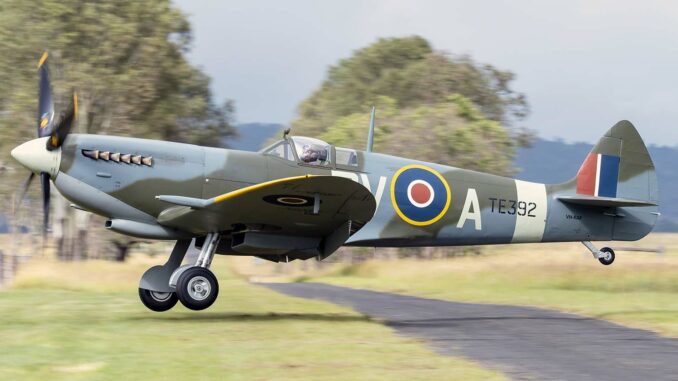
The invention of the fighter plane: a revolution in military aviation, from its first concepts to its crucial role in modern conflicts.
The fighter plane, born at the beginning of the 20th century, radically changed military air strategies. Designed to intercept and destroy enemy aircraft, it has become an essential asset in mastering the skies. The first ideas for armed aircraft date back to the First World War. Engineers and pilots quickly realized the importance of aviation in combat. In 1915, the first aircraft equipped with synchronized machine guns, such as the Fokker E.I, marked a turning point. Synchronization made it possible to fire through the propellers without damaging them, a major technical advance.
During the Second World War, fighter aircraft evolved, becoming faster and more maneuverable. Models such as the Supermarine Spitfire or the Messerschmitt Bf 109 played a key role in aerial battles, notably during the Battle of Britain. With the arrival of jet engines in the 1940s, fighter aircraft became even more powerful.
Today’s modern fighter aircraft, such as the Rafale or F-35, combine firepower, stealth and cutting-edge technology to tackle air and ground threats. These aircraft are capable of supersonic speeds, and are equipped with sophisticated radars to detect enemies at long range. Flying a fighter jet requires years of intensive training, making pilots essential players in the protection of airspace.
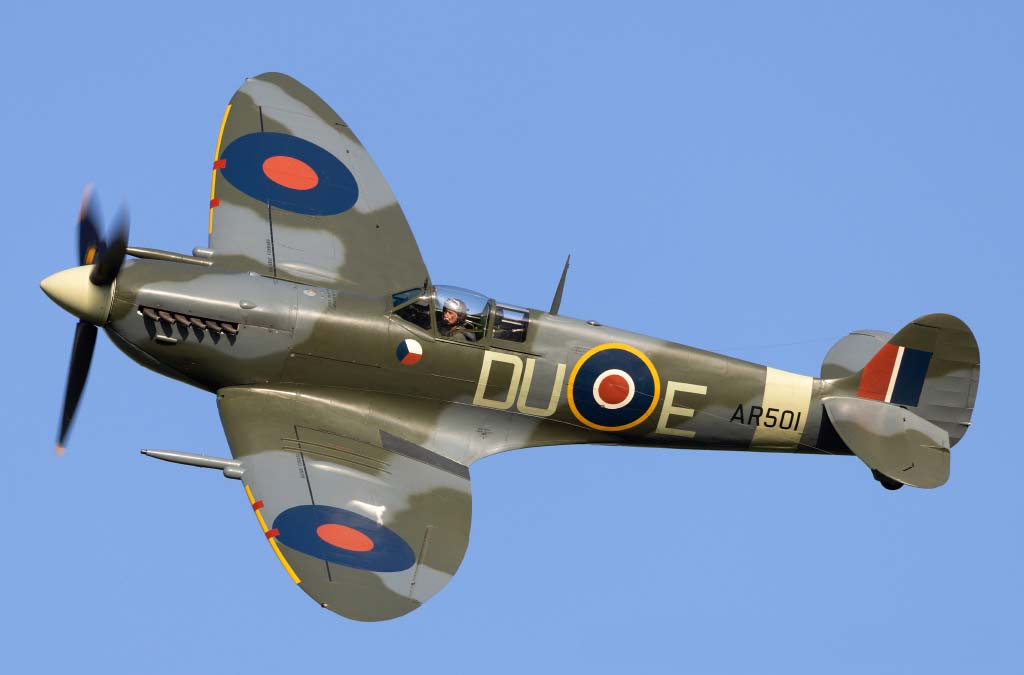
Origins and birth of the fighter jet
First ideas and uses during the First World War
The fighter appeared during the First World War, when aviation began to play an important military role. At the start of the conflict, aircraft were mainly used for reconnaissance and observation of enemy positions. However, the need to neutralize enemy aircraft soon became apparent.
The first air battles were improvised, with pilots using light weapons such as pistols or rifles. In 1915, French engineer Raymond Saulnier developed a synchronization system enabling a machine gun to be fired through the propeller without hitting it. This device was used by French pilot Roland Garros, who successfully shot down several enemy aircraft.
Dutch engineer Anthony Fokker, working for Germany, perfected the system, creating the Fokker E.I. This monoplane was equipped with a synchronized machine gun, giving German forces a significant advantage in the air. This innovation marked the beginning of the fighter as a strategic weapon.
Technological innovations: weapons synchronization and armed aircraft
Weapon synchronization with the propeller was a major breakthrough. Before this technology, firing through the propeller risked damaging it. The synchronization mechanism enabled the machine gun to fire between the rotating blades, improving the effectiveness of armed aircraft.
Aircraft design also evolved. Structures changed from wood and canvas to more robust materials, increasing strength and speed. Engines became more powerful, enabling speeds in excess of 150 km/h. These improvements transformed the aircraft into an essential tool for air superiority.
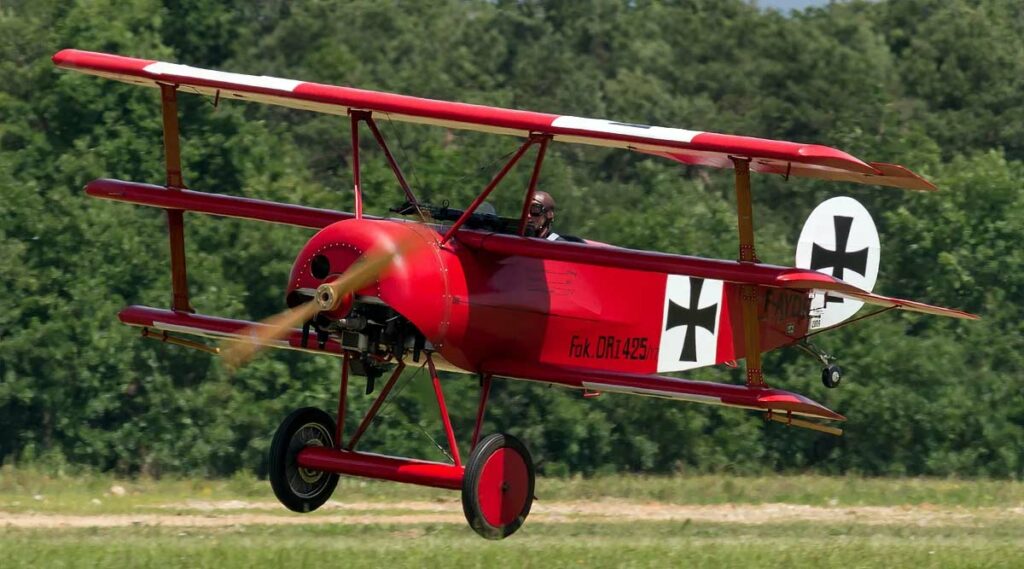
Major developments during the Second World War
Improvements in handling and speed
During the Second World War, fighter aircraft underwent significant progress. Piston engines were perfected, some developing over 1,500 horsepower. Aircraft could now reach speeds in excess of 600 km/h.
Maneuverability became a crucial criterion. Engineers optimized aerodynamics to improve performance in circling combat. Metal structures replaced wood, offering greater strength and the ability to withstand higher forces.
Weapons systems also evolved. Aircraft were equipped with heavy machine guns, automatic cannons and sometimes rockets. Sighting technologies and communications equipment were improved, enabling more precise engagements and better coordination between pilots.
Emblematic aircraft: Spitfire, Messerschmitt Bf 109, P-51 Mustang
Several fighter planes became famous for their performance:
- Supermarine Spitfire: This British aircraft was appreciated for its great maneuverability and speed. Powered by a Rolls-Royce Merlin engine, it could reach 594 km/h. The Spitfire played a key role in the Battle of Britain.
- Messerschmitt Bf 109: The German Luftwaffe’s main fighter, it was equipped with a powerful Daimler-Benz engine, enabling it to reach speeds of 640 km/h. Its advanced design made it a formidable adversary.
- North American P-51 Mustang: an American aircraft originally designed for the Royal Air Force, it gained in efficiency with the installation of the Merlin engine. The P-51 could fly at over 700 km/h and had a long range, ideal for escorting bombers.
Impact on air battles
Improvements in fighter aircraft had a profound impact on the course of battles. Air superiority became essential to the success of military operations. Controlling the skies meant protecting troops on the ground and intercepting enemy bombers.
The Battle of Britain in 1940 is a striking example. British pilots defended the country against German air attacks, thanks in particular to the Spitfire and Hawker Hurricane. Their success prevented an invasion and was a turning point in the war.
Fighter aircraft were also used for escort, reconnaissance and ground attack missions. Aerial tactics became more sophisticated, with the use of in-flight formations and advanced engagement strategies.
Technological developments during this period laid the foundations for modern combat aviation. The experience gained led to innovations that continue to influence the design of today’s fighter aircraft.
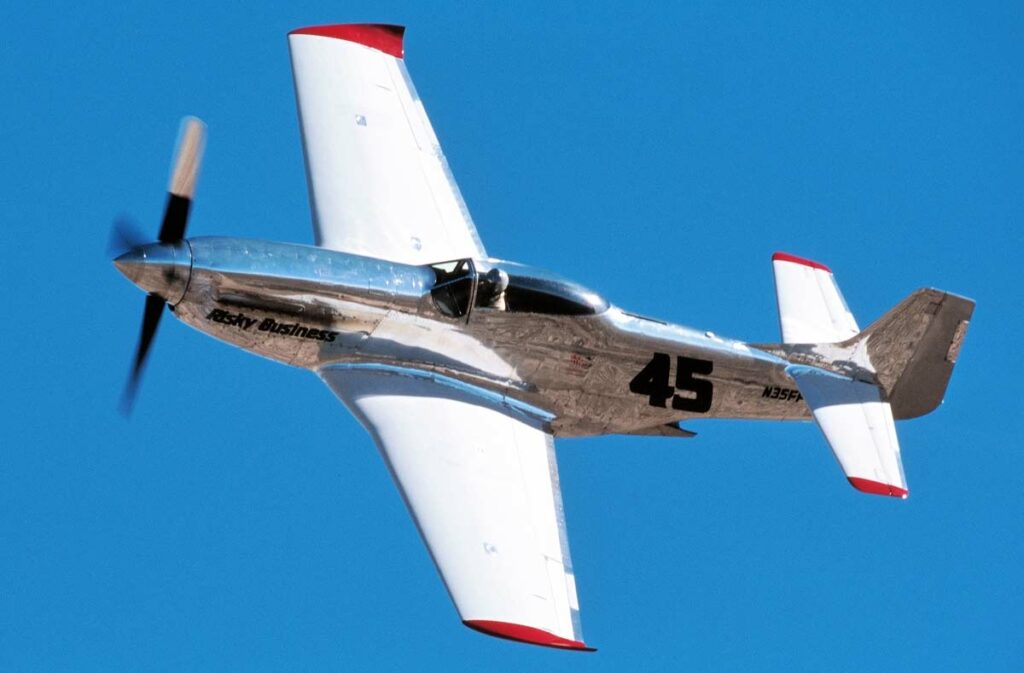
The jet-engine era and the evolution of modern fighters
Introduction of jet engines: MiG-15, F-86 Sabre
With the end of the Second World War, engineers began experimenting with new types of propulsion, mainly jet engines. This change enabled fighter aircraft to gain in speed and altitude, far surpassing the performance of piston-engined fighters.
The MiG-15 and the F-86 Sabre are two key examples of this revolution. The MiG-15, developed by the Soviet Union, entered service in the late 1940s. This aircraft was capable of speeds of up to 1,076 km/h, thanks to its Klimov VK-1 jet engine. The MiG-15 played an important role in the Korean War, where it faced off against American fighters, notably the F-86 Sabre.
The F-86 Sabre, designed by North American Aviation, was also powered by a jet engine, capable of speeds similar to those of the MiG-15. Both aircraft were equipped with automatic cannons and heavy machine guns, making them highly effective in aerial combat. The enhanced performance of these fighters set the standard for future combat aircraft.
Increased performance and new strategic challenges
The introduction of jet engines transformed aerial combat by dramatically increasing the speed and maneuverability of fighter aircraft. Aircraft from this period could fly at supersonic speeds, increasing their strike and interception capabilities. Fighter aircraft also increased their range and operational altitude, enabling them to intervene at greater distances and avoid enemy defenses more easily.
The strategic stakes have evolved with these new capabilities. Air surveillance and air superiority have become priorities for the nations owning these fighters. The new capabilities of jet engines also influenced the development of military infrastructures, such as air bases and in-flight refueling systems.
The Cold War: the air arms race
During the Cold War, the arms race between the United States and the Soviet Union intensified, particularly in the air. Both superpowers sought to develop ever faster and more sophisticated fighters. This period saw the introduction of second-generation fighters, such as the MiG-21 for the Soviet Union, capable of flying at Mach 2 (around 2,100 km/h), and the F-4 Phantom II for the United States.
Fighter jets became essential tools in nuclear deterrence strategies. They were not only capable of carrying out conventional attacks, but also of transporting tactical nuclear weapons. Air defense and pre-emptive strike missions were integrated into the strategic plans of both sides.
Weapons systems also advanced. Modern fighter jets began to be equipped with radar-guided air-to-air missiles, increasing their ability to engage long-range targets. The Cold War thus marked a period of intense development for fighter aircraft, laying the foundations for today’s technologies.
The rapid evolution of jet engines and weapons systems redefined the notion of air superiority, making control of airspace crucial to the military strategy of every nation involved.
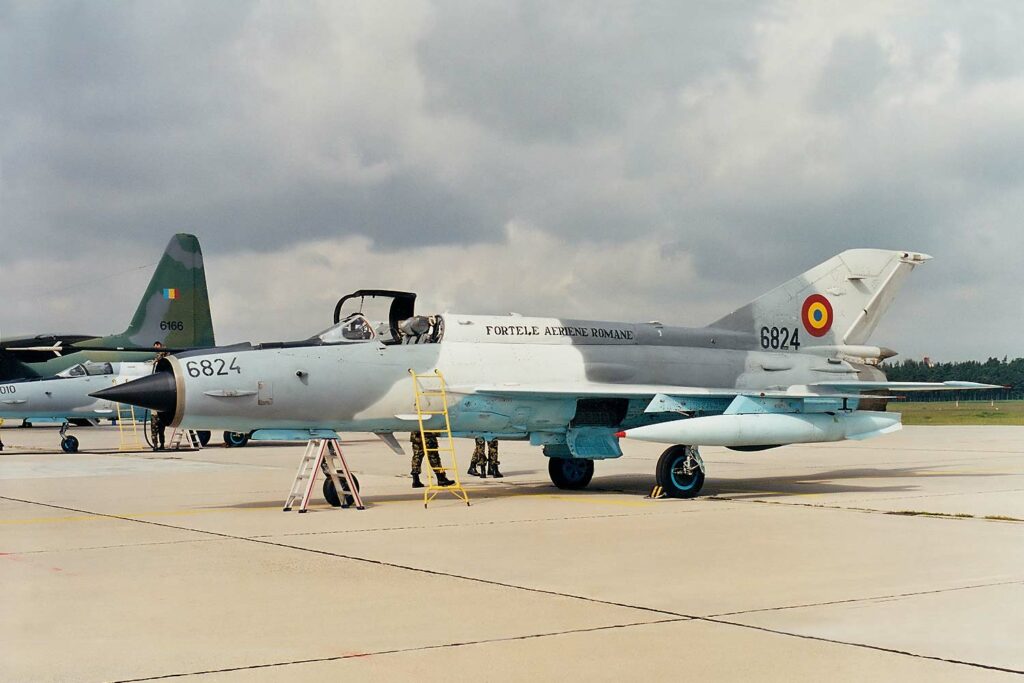
Fighter aircraft in the modern era
4th and 5th generation aircraft: Rafale, F-22, F-35
Modern fighter aircraft are classified according to their technological capabilities, ranging from 4th to 5th generation. 4th-generation aircraft, like France’s Rafale, are distinguished by their multi-role capabilities. They can be used for air-to-ground and air-to-air attack missions, with great operational flexibility. The Rafale can fly at a maximum speed of 1,912 km/h and has an operational range of 3,700 km.
The F-22 Raptor (USA), a 5th-generation aircraft, has introduced advanced technologies, such as stealth, to reduce its detection by radars. It can reach a speed of 2,414 km/h and is equipped with sophisticated electronic systems, such as integrated sensors to provide enhanced situational awareness. The F-35 Lightning II, another 5th generation aircraft, is designed to be more versatile than the F-22, with versions capable of short take-off and vertical landing (STOVL).
On-board technologies: stealth, radar, intelligent weapons systems
Modern fighter jets are equipped with stealth technologies that make them more difficult to detect by enemy radars. Stealth is achieved through special radar-absorbing materials and aerodynamic designs that minimize infrared and electromagnetic signatures.
In addition to stealth, these aircraft are equipped with Active Electronically Scanned Array (AESA) radars, which can detect and track multiple targets simultaneously, even at long range. The Rafale, for example, uses the RBE2 AESA radar, capable of tracking 40 targets at a time and locking onto several of them simultaneously.
Intelligent weapons systems enable precise, efficient target engagement. Modern aircraft can use air-to-air missiles such as the Meteor or AIM-120 AMRAAM, and laser- or GPS-guided air-to-ground missiles such as the SCALP or JASSM. These weapons systems are integrated into pilots’ helmets, enabling them to lock onto targets simply by looking in their direction.
Mission versatility (air-to-air, air-to-ground)
Modern fighter jets are designed to be versatile, capable of carrying out several types of mission, from attacking ground targets to intercepting enemy aircraft. The Rafale, for example, is a multi-role aircraft capable of air-to-air missions, such as interception and air superiority, as well as air-to-ground missions, such as bombing or supporting ground troops.
The F-35, meanwhile, is designed for use by several military branches, including Army Aviation, Navy and Marines. It can carry out surveillance and reconnaissance missions, and even attacks against air defense systems, thanks to its stealth and ability to carry precision-guided weapons.
This versatility enables air forces to adapt their aircraft to a wide variety of missions, reducing the need for several types of aircraft for different tasks, and thus increasing operational efficiency.
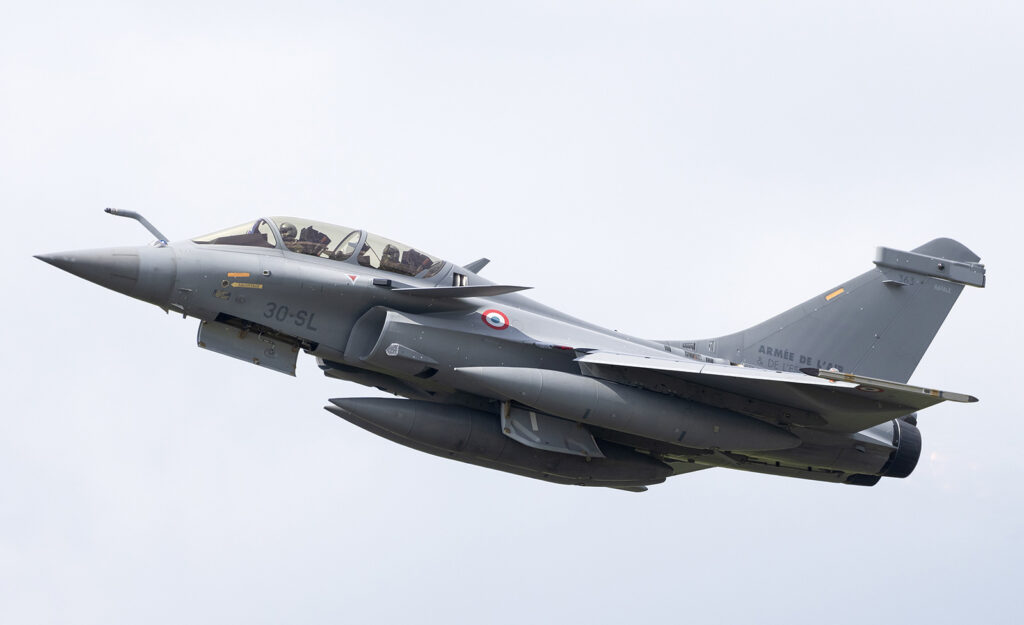
Future prospects for fighter aircraft
Development of drones and autonomous fighters
Fighter aviation is rapidly moving towards autonomous and semi-autonomous systems. Combat drones (UCAVs – Unmanned Combat Aerial Vehicles) are already playing an important role in modern military operations. Models such as the MQ-9 Reaper, developed by General Atomics, are used for surveillance, ground attack and reconnaissance missions. These drones can fly at an altitude of 15,000 meters and have a range of over 1,900 km, making them particularly effective for long-duration missions.
The next step is the integration of autonomous fighters capable of making decisions in real time, without direct human intervention. Projects such as Boeing’s Loyal Wingman show the first advances in this field. This autonomous drone is designed to fly alongside manned fighter jets, offering support in dangerous missions. It can carry weapons and carry out reconnaissance missions.
The use of these systems reduces the risks for human pilots, while increasing the operational capabilities of air forces. Autonomous fighters will probably be integrated into swarm combat systems, where several drones coordinate their actions to maximize efficiency.
Technological advances: AI, hypervelocity
Advances in artificial intelligence (AI) are enabling fighter jets to become more autonomous and responsive. AI systems can analyze data from onboard sensors in real time, make tactical decisions, and even manage complex combat situations. The F-35 Lightning II is already equipped with some AI capabilities that help the pilot manage missions and prioritize threats. Future generations of fighter aircraft will probably incorporate more advanced AI systems to optimize information processing and decision-making.
Hypervelocity is another key technological advance. Hypervelocity aircraft and missiles can exceed 6,000 km/h, making them extremely difficult to intercept. Countries such as the USA, Russia and China are investing in the development of such systems. Fighters capable of reaching these extreme speeds will have a decisive advantage in future conflicts, particularly for rapid strikes and deep penetration missions into enemy territory.
Geopolitical issues and evolving threats
Current geopolitical issues are shaping developments in fighter aviation. Rising tensions between powers such as the USA, China and Russia are driving accelerated modernization of air forces. The development of new technologies, such as 6th generation fighters, autonomous drones and directed energy weapons, is directly influenced by these rivalries.
The evolution of threats also includes the increase in air defense capabilities. Defense systems such as the S-400 (Russia) or THAAD (USA) are capable of detecting and shooting down long-range fighter jets. This is forcing countries to develop stealthier, faster fighters capable of penetrating these defenses.
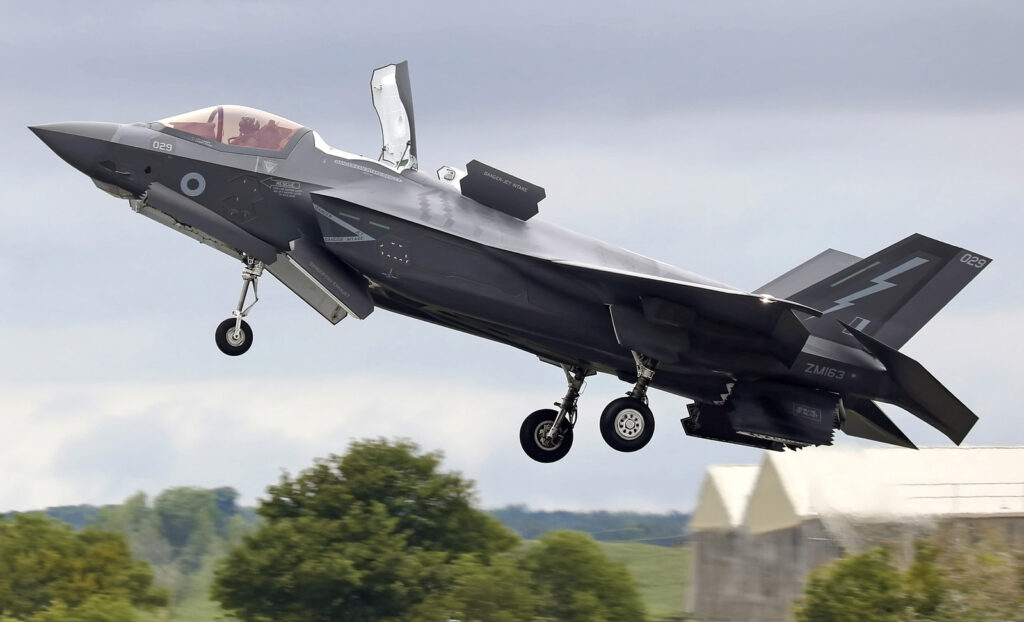
The emergence of asymmetrical conflicts, where adversaries do not always have conventional air forces at their disposal, is also changing strategy. The use of combat drones and autonomous systems will enable nations to respond effectively to less predictable threats. Counter-terrorism, surveillance of sensitive areas and peacekeeping missions will increasingly require autonomous air systems to minimize casualties and maximize tactical flexibility.
War Wings Daily is an independant magazine.